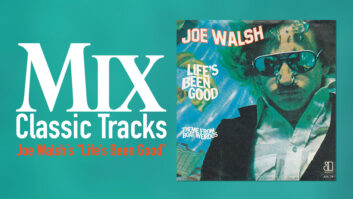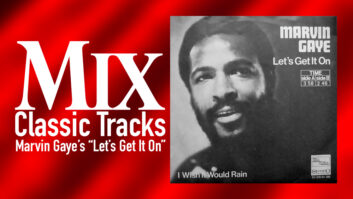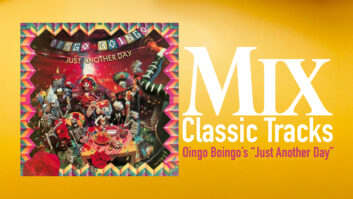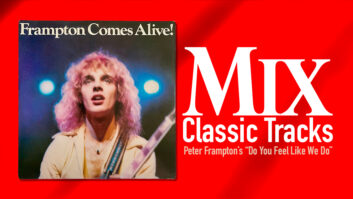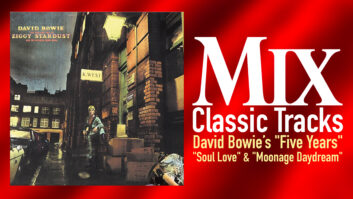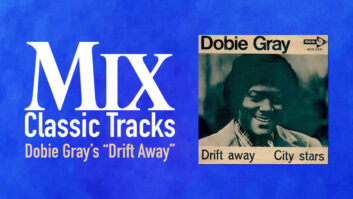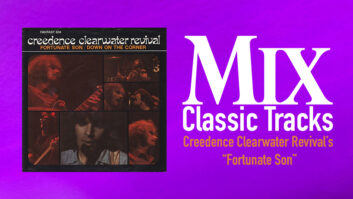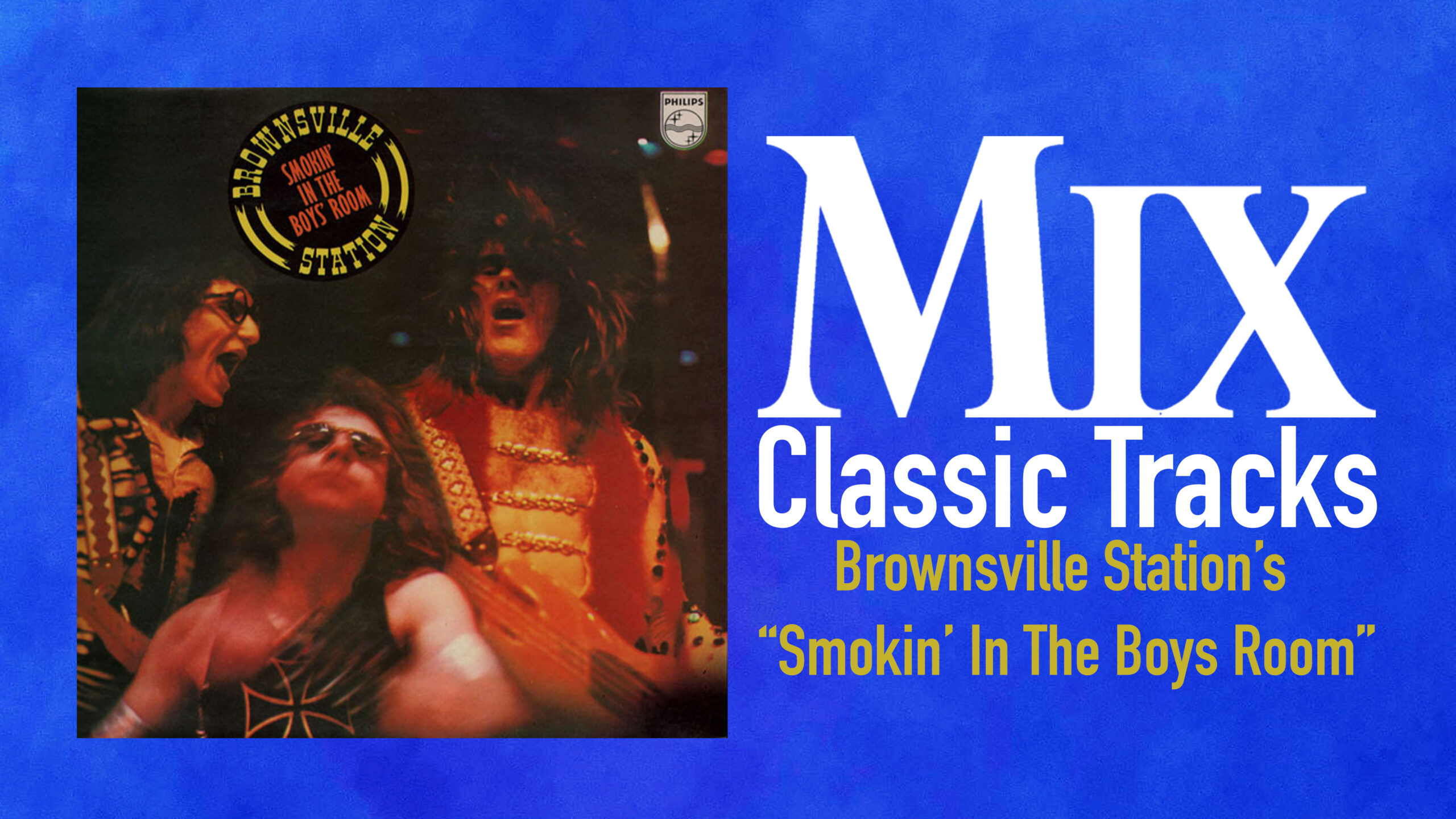
When it came out in late 1973, “Smokin’ in the Boys Room” immediately became the rallying anthem for what was for many high school students their first act of rebellion against authority. And what better place to sing along between puffs on your Marlboro Red? The tiled walls of an institutional lavatory nicely approximate the generous portion of plate reverb that the record picked up when it was recorded at Media Sound on West 57th Street in New York City that fall.
In ’73, the band Brownsville Station had just gone from a quartet to trio. The departure of the original bassist saw rhythm guitarist Michael Lutz take over the bass spot, and they quickly found a new balance. Lutz says the band rehearsed and gigged relentlessly in a concentrated swath of clubs and colleges between Chicago, Detroit and their base in Ann Arbor, Mich., that became, as he put it, “what Hamburg was for The Beatles.”
They had formed at the end of the ’60s outside of the politicized musical milieu of the Detroit/Ann Arbor scene, where bands like the revolutionary MC 5 and the psychedelic Früt of the Loom had kicked at the undercarriage of what passed for old-school culture then and at the pop sheen that was forming over Chicago (the city and the band). But Brownsville Station were still fans of the pre-revolution’s music — old rock ‘n’ roll songs they played in clubs and parties; they weren’t particularly distressed that the album that would become their biggest hit was mainly made up of cover songs, as long as they had a few of their own on there. Rock critic Lester Bangs, writing in Rolling Stone in 1972, when the band left Warner Bros and signed with Big Tree Records, said, “Brownsville didn’t put on any badass streetpunk revolutionary airs. They were just kids from the duplexes of America, not the belly of the beast, and cared shit less about politix and just wanted to rock ‘n’ roll.”
Switching to Big Tree was a turning point for the band. The label was owned by Doug Morris, a budding songwriter whose business instincts, honed by selling records out of the trunk of his car, were good enough to lead him eventually to the executive suite at Atlantic Records and other major labels. (He is currently the CEO of Universal Music.) Morris had assigned Eric Stevens, the son of a major Midwest record distributor that he worked with, to produce the band’s first record on Big Tree, A Night on the Town, but wasn’t happy with the results (something Bangs concurred with in his review: “…their new album ain’t as good as their first one, which is mainly a production problem…”). So for the album Yeah, Morris entered the control room in Studio A as co-producer, along with his business partner, Dick Vanderbilt.
Drummer Henry “H-Bomb” Weck remembers how the recording process changed what had been a thrashing live band into more of a molded pop entity. “Brownsville was a hard-rockin’ band live,” he recalls. “I had to play hard and loud to compete against Marshall stacks with no microphones. Doug [Morris] was a great record producer but his background was Top 40, so he steered us toward a cleaner sound, nothing like our stage sound. His goal was to cut records that sold. And since he was also now a record executive, we had to work on his schedule, so we started recording at like 9 a.m. every day for that record.”
For the sessions, which ran the better part of a week for the entire album, Weck was placed in what he refers to as a “drum cage,” a carpeted fort of gobos to isolate the drums. He found it frustrating, especially after discovering that Media Sound was a converted church whose acoustics were being underutilized on this record.
For “Smokin’,” Weck played a 1960s-vintage silver-sparkle Ludwig trap kit — a 22-inch kick, a snare, and two rack toms and a floor tom (12, 13 and 16 inches, respectively) — with a pair of Neumann U47 microphones overhead and Shure 57s closer to the kit. “I hit the drums so hard with those huge 3-S logs [drumsticks] that they usually kept the good mics off the snare and toms,” he remembers. The song’s intro had him playing a side stick, and the delayed reverb on it — the track’s most noticeable effect — was created by tapping off an aux send to a Cooper Time Cube, which delayed the signal to the studio’s EMT plate.
Engineer Michael Delugg recalls that he switched out the Sennheiser 421 microphones he often recorded drums with for Shure 57s after he heard Weck’s heavy touch. “We got to ‘Smokin’’ early in the record,” Delugg says. “I loved the song and the band and I kind of bonded further over it.”
Classic Tracks: Dobie Gray’s “Drift Away”
There were plenty of classic pieces of gear in the studio, from the 16-track Ampex multitrack deck and 24-fader Neve 8068 console the record was tracked on, to guitarist/vocalist Cub Koda’s 1952 gold-top Gibson Les Paul (which, trying to make it match a rugby referee’s shirt he liked, Koda and the band’s road crew painted over with black and white stripes, causing them to cringe in retrospect).
Bassist Michael Lutz, who co-wrote “Smokin’” with Koda (who passed away in 2000), played a Heyner bass though a Dallas Arbiter fuzzbox and into the studio’s Ampeg B-15 amp. Even with Weck in the drum fort, Lutz remembers that keeping the band together in the same room was important. “That’s how we rehearsed and how we played,” he says.
Staying tightly knit as a group also helped in their relationship with Morris, whom Lutz describes alternately as “astute” and “crazy.” “He did have great ideas,” he says, “but we realized that when we would argue with him, we were arguing not only with our producer, but also the president of our record label. It was a double-edged sword.”
Fortunately, Morris left the band pretty much on their own for “Smokin’,” a song that some say he cared so little for that he positioned it last on the album’s B side rather than as a leading track, the usual position for singles. Delugg has a different recollection. “I think Doug saw that me and the band were having such a great time with it that he just let me have the reins on that one,” he says.
“‘Smokin’’ is there because we were fighting to get some of our original songs on the record,” says Lutz. “Aside from ‘Smokin’ in the Boys Room’ and ‘All Night Long,’ the rest of the tracks were covers, like ‘Lightnin’ Bar Blues’ by Hoyt Axton. Doug picked good songs, but we wanted some of ours to be there, too — at least as B sides of a single so we could make some money.” (It would be a DJ in Portland, Maine, that would play the track from the album and build momentum for “Smokin’ in the Boys Room,” prompting Morris to rush it out as a single.)
Like most recording sessions of the time, it all went down quickly. The basic track was nailed by the third take. Koda went out and cut both a harmonica and a guitar solo, and doubled both parts. “We pretty much put it together with Mickey Dee” — the band’s nickname for Delugg, says Lutz. “Because Doug didn’t really care about the song, we had more control over it.” Delugg recorded three passes on the guitar solo, then submixed them to a single track, with a crossover from one to another in mid-solo.
Koda’s lead vocal was sung into a Neumann 87 with a pad on it. “His microphone technique was pretty good; he just needed a little guidance about coming in on the spoken intro and leaning back on the choruses,” says Delugg. “Then the rest of the band came in to sing on the choruses. The whole single, not counting the mix, took no more than two hours.”
“It was recorded the same way it was written — fast, which is a good sign; it means we were comfortable with it,” says Lutz. “We knew we had a good song, but we didn’t expect it to blow up the way it did.”
The mix, done up in Media Sound’s remix room on the third floor, was also quick. Again, Morris set the tone according to his sales instinct. “Doug would not mix hard-left and -right,” says Weck. “He was aiming for AM radio. It wasn’t a mono mix, per se, but it was very down the middle. The solos, toms, cymbals and reverb are the only stereo things on the record. The snare, kick, bass and rhythm are straight up the middle. We did a lot of double-tracking, but it didn’t wind up being used to widen the stereo image, but rather to beef up the sounds.”
“Smokin’ in the Boys Room” peaked at Number 3 in Billboard and Number 2 in Cashbox in 1974, earning the band its first Gold record and, according to Lutz, fueling a tour that saw them play 347 nights that year. The song would go on to have another incarnation, too. In June 1985, Motley Crüe recorded it on their multi-Platinum Theater of Pain album. It would be their first Top-40 single, peaking at Number 16 and spending 15 weeks on the U.S. charts. The cut is also on Crüe’s three greatest-hits albums. But the original will always be Brownsville Station’s claim to enduring fame.
This article was originally posted in June, 2008.
